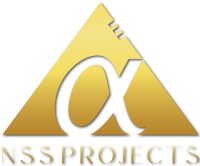Content
Not only is it highly secure and automatically scalable, it also offers a rich set of APIs and services. It is also incredibly easy to set up as there is no need to purchase server capacity or any other resources. Cloud computing is not only gaining popularity, it is becoming the norm.
Not only that, but it also enables you to build additional, specialized apps at will. Platform as a Service technology can be an efficient way for companies to build apps without the cost or headache of maintaining all the tech infrastructure. Use Sunshine to build private customer applications that fit the custom needs of your business. Or, if you’d like, go public with your app and feature it alongside more than 250 other apps and integrations on the Zendesk Apps Marketplace.
Examples Of Iaas
If your need for resources grows beyond what you had anticipated, you can quickly get additional capacity through your IaaS provider. IaaS makes full use of the cloud to give you continuous and malleable access to resources as your needs spike or drop. If you’re planning to set up a cloud business model, reach out to Citrusbug for a free consultation regarding the development process, technology stack and a complete road-map. We design and build tailor-made mobile apps for iOS and Android platforms. Our mobile app developers have the expertise to create highly functional technologies.
The organization or the PaaS cloud vendor manage the servers, storage and networking, while the developers manage the applications. IaaS is a cloud-based service where a cloud service provider manages the back-end IT infrastructure components like servers, networking, and storage resources. It delivers them to organizations as virtual machines accessible via the internet.
- You may also want PubSub to pass messages between your app instances and push notifications for the mobile app to improve customer engagement.
- When you compare IaaS vs. PaaS vs. Saas in terms of resilience, IaaS stands out of the three.
- Usually, this approach manifests itself in different product tiers.
- Once it’s finished, it would be considered SaaS because it would now provide a service to its users.
IaaS, PaaS, and SaaS stand for infrastructure-as-a-service, platform-as-a-service, and software-as-a-service. IaaS provides a pay-as-you-go approach for storage, networking, and virtualization. In addition, PaaS includes even more services like hardware and software development tools available via web. And with SaaS, you get the highest degree of vendor management by “renting” full software solutions. IaaS delivers cloud computing infrastructure, including servers, network, operating systems, and storage, through virtualization technology.
Because of its speed of deployment, IaaS is a quick and flexible way to build up and take down development and testing environments. For example, you work with Python language, which is compatible with your current PaaS solution. Suddenly, the provider launches an update that requires JAVA for further compatibility.
Know The Difference Between Iaas, Paas, And Saas:
Among the services sought from MSPs, business continuity and disaster recovery capabilities are in increasingly high demand, and for good reason. While IaaS offers the most flexibility out of the three, it also requires the most upkeep, maintenance, and security by the client. Ultimately, this reduces the cost of additional IT support and improves user flexibility. An on-prem solution may require software procurement and the set up of additional physical servers. SaaS applications may not integrate easily with legacy systems or other applications, depending on if they were designed to follow open standards for integration.
No matter which option you choose, migrating to the cloud is the future of business and technology. Companies experiencing rapid growth like the scalability of IaaS, and they can change out specific hardware and software easily as their needs evolve. For each of these, we’ll look at the concept, benefits, and variances. We’ll also help you understand the key differences among SaaS, PaaS, and IaaS—so you can best choose one for your organization. User is able to access the service via multiple platforms such as laptop, desktop, mobile etc. A blog about software development best practices, how-tos, and tips from practitioners.
Nonetheless, the latter will likely remain dominant and stay the largest cloud service model in terms of cloud spend. You can even include other vendors and stay flexible during the entire process. PaaS is also the way to go if your organization requires customized applications that need to be developed and deployed in a short amount of time. We’re the world’s leading provider of enterprise open source solutions—including Linux, cloud, container, and Kubernetes. We deliver hardened solutions that make it easier for enterprises to work across platforms and environments, from the core datacenter to the network edge.

Many applications designed originally for the desktop (e.g., Adobe Creative Suite) are now available as SaaS (e.g., Adobe Creative Cloud). While the customer is in control of the apps, data, middleware, and the OS platform, security threats can still be sourced from the host or other virtual machines . Insider threat or system vulnerabilities may expose data communication between the host infrastructure and VMs to unauthorized entities.
We’ll also take a look at some examples of each to make it a little easier to understand. The PaaS organization stores your data, which can pose a security risk to your app’s users. You have to make sure that your apps and operating systems are working properly and providing the utmost security. Now that you have an overview of the different cloud services, we’ll break it down a little further.
To avoid these costs, enterprises turn towards Cloud Computing Service vendors that provide the same or advanced infrastructure as per your specifications on a rental basis. One of the most significant benefits of SaaS cloud computing model architecture is its availability. Because the application is distributed through the https://globalcloudteam.com/ vendor’s servers, the user can plug into it from whatever computer he uses through his account. The user-generated data is stored both on the vendor’s servers in an encrypted form and also on the user’s device. The widespread adoption of cloud computing has changed the way products are created and presented to consumers.
Common Examples Of Saas, Paas, & Iaas
Development teams are responsible for ensuring application performance. While, the vendor is responsible for maintaining performance of the underlying platform. Using a SaaS solution means that the third-party vendor controls everything regarding the application. Users will be limited to the specific functionality that is provided by the vendor.
IaaS works primarily with cloud-based and pay-as-you-go services such as storage, networking and virtualization. Additional resources and training may be required for the workforce to learn how to effectively manage the infrastructure. Customers will be responsible for data security, backup, and business continuity. Due to inadequate control into the infrastructure however, monitoring and management of the resources may be difficult without adequate training and resources available inhouse. The other significant benefit of SaaS is the way it structures a particular business model. Thanks to its deployment approach, the product is open for customization to fit specific user needs.
Types Of Cloud Computing Services
So in terms of the cloud continuum, PaaS fits snugly between IaaS and SaaS. For small to medium-sized businesses, you may not have the IT strength for the flexibility of IaaS. Technology providers can help a managed service provider with applications, networks, data security, and more. SaaS, or software as a service, is the most comprehensive form of cloud computing services, delivering an entire application, managed by a vendor, through a web browser.
Cost reduction scenarios described are intended as examples of how a given Intel®-based product, in the specified circumstances and configurations, may affect future costs and provide cost savings. Learn about cloud management platforms and how they can help serve your business and technical needs – like whether to use containers or integrate with a public service. Find resources on cloud management tools, third-party cloud management platforms, and more. On-premises requires the highest level of management and the greatest capital expenses but could be the most cost efficient in the long term. Everything is run in a private cloud, on hardware that belongs to your organization, by your IT team.
Provides the freedom to developers to focus on the application’s design while the platform takes care of the language and the database. Its ability to offer the users to scale the business based on their requirements. An enterprise-ready Kubernetes container platform with full-stack automated operations to manage hybrid cloud, multicloud, and edge deployments. Managed services are a way to offload general tasks to an expert, in order to reduce costs, improve service quality, or free internal teams to do work that’s specific to your business.
Head To Head Comparison Between Paas Vs Saas Infographics
Latency and performance issues might occur if you access the software from far-off distances. Because data is stored on external servers, there’s a risk of a security breach, resulting in financial losses. You can use the software from any device, anywhere, anytime, as long as there’s an internet connection.
The delivery model of PaaS is similar to SaaS, except instead of delivering the software over the internet, PaaS provides a platform for software creation. PaaS is where coupled with the underlying hardware, the third-party vendor provides SaaS vs PaaS middleware, operating systems, and tools required to develop and test applications. This differs the procuring organization from the cost of maintaining, patching or any kind of capacity planning required for your underlying platform.
Platform-as-a-service is used as a way to build new products on top of your already existing network. But SaaS products are entirely managed by the vendor and ready-to-use by your teams. SaaS is hosted on remote servers and fully managed, updated, and maintained by a third-party vendor. This results in less responsibility but also less control for the end user. SaaS is delivered as a fully functional service and can be accessed remotely via any web browser, allowing clients to work from anywhere.
Cloud Computing is more efficient and cost-effective solution than traditional data centers. The term Cloud computing services comprises all the services which are hosted over a Cloud. Hence Cloud Computing is the utilization of services such as storage, applications, and servers, over the cloud, on-demand and in a dynamically scalable fashion. Consider that you have a server on-site with your Enterprise software services and its database. This incurred an initial investment in terms of IT infrastructure and a physical location, and there are gradually growing costs involving maintenance.
